By Ryan Hilger
“‘I am forced,’ said Mr. Balfour, ‘to the conclusion that now, for the first time in modern history, we are face to face with a naval situation so new and so dangerous that it is difficult for us to realize all its import.”1 Germany had launched its fourth dreadnought in four years and Britain was nervous. The Royal Navy had ruled the waves since Admiral Horatio Nelson’s victory at Trafalgar. But the international situation in the early 20th century was anything but certain as Britain and Germany embarked on an arms race, and with the United States and Japan close behind. After World War I, most of the major naval powers realized these enormous ships would only get larger, keeping all of them locked in an arms race when the world was supposed to be permanently at peace.
Today, the United States finds itself again in a multipolar world, with the Chinese and Russian navies looking more threatening by the day. Yet the Navy continues to wrestle with defining target ship counts and fleet sizes, and is struggling to find enough funding to substantially grow the fleet while adequately maintaining it. An op-ed in Breaking Defense called it the “spectacular collapse of Navy force planning.”2
In response to mounting tensions after WWI, the five major powers negotiated the Washington Naval Treaty of 1922, limiting capital ship development to stabilize the arms race. The treaty, followed by the 1930 London Naval Treaty, created a new class of ship—treaty cruisers—and launched a long period of innovative naval development. The Navy responded with tremendous shipbuilding activity, producing 18 cruisers across five classes in 20 years. Treaty cruisers would go on to play a pivotal role in the outcome of World War II in the Pacific and were present at every major fleet action. The story of the treaty cruisers offers lessons for today’s Navy to creatively solve problems around hard constraints and innovate at the fleet level while building up for great power competition.
Early Cruisers
In 1915, the Navy learned through its annual fleet exercises that it needed a ship somewhere in stature between a destroyer and a battleship. Before this, the major maritime powers focused primarily on building ever-larger battleships and small destroyers to fight between them. At the time, cruisers served primarily as long-range scouts for the battle fleet—an important role. But the Navy only had a few of these ships. In an annual letter to Congress in 1915, Commander in Chief of the Atlantic Fleet, Admiral Frank Fletcher, noted that on two fleet maneuvers, conducted while en route to Guantanamo Bay, the lack of cruisers for scouting allowed inferior forces to evade the battle fleet. Several days later, that same battle fleet found itself being tracked by destroyers for lack of cruisers to provide advance warning and keep the destroyers at bay.3 Admiral Fletcher noted:
[T]he lack of heavily armored fast vessels and light cruisers was especially felt for seven days from the start of the problem until it ended. The Blue commander in chief has no reliable information of the position or movements of the enemy while the enemy due to superior cruiser force was well informed of our movements and dispositions at all times.4
Admiral Fletcher noted that destroyers filled an admirable role here, but that their performance and seakeeping, especially during the winter months, made them unsuitable for long-range scouting and attack.5 Destroyers had vital roles to fill, but scouting was not one of them. Secretary of the Navy Josephus Daniels noted in his letter with Admiral Fletcher’s report that “fast armored ships and fast light cruisers” were his third-highest priority, only behind the shortage of officers and Sailors.6 Out of this would rise the 10-ship Omaha class. It was a start.
The Battleship Holiday
In 1922, as the USS Omaha (CL 4) was being fitted out prior to commissioning, the United States negotiated the Washington Naval Treaty with Britain, Italy, Japan, and France. It contained a number of provisions designed to lessen the tensions between great powers by ensuring approximate tactical parity existed between them and that no fleet could become overly dominant.
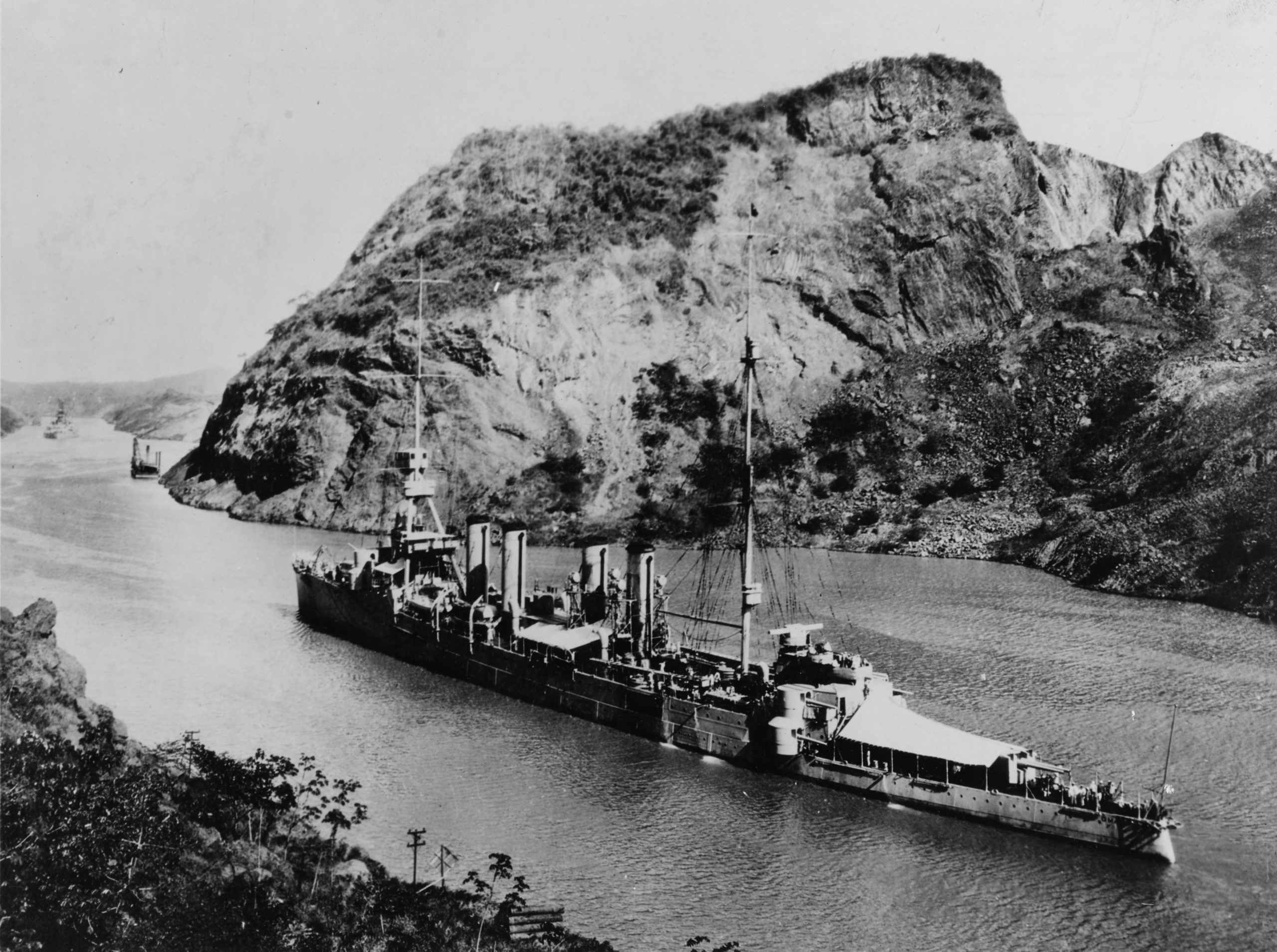
The treaty limited the total tonnage and armament of capital ships, generally seen as battleships and battlecruisers, limited aircraft carriers, and set tonnage and armament limits on a non-existent class of combatants: 10,000 tons and 8-inch guns.7 Importantly for the United States, Article XIX forbade improvements to shore fortifications in the Pacific, meaning that bases in the Philippines and Wake Island could not be strengthened further. This played a major role in shaping the strategic purpose of the new class and the decision to retire the oldest, most-costly, coal-burning ships in the fleet to free up tonnage for these new ships.8 The five powers immediately set to work developing this new class.
This new, unknown class presented a number of constraints for the Navy, in particular the General Board, to wrestle with. Combined with the 10,000 ton and 8-inch caliber gun limits, the prohibition on improving fortified shore bases in the Pacific and the limits on capital ship tonnage created additional degrees of complexity. The ships had to fill a strategic role, and wargaming War Plan Orange against Japan revealed that the fleet needed to be much larger than previously thought. The treaty’s 5-to-3 American advantage in capital ship tonnage over the Japanese was driven by the Navy’s desire to have at least a 7-to-6 advantage on reaching the Western Pacific, assuming the fleet lost 10 percent of the battle force for every thousand miles steamed.9
Ship readiness became of paramount concern. Planners quickly realized that they needed readiness levels in peacetime of greater than 90 percent to achieve the required wartime superiority against Japan.10 That threshold, especially when factoring in modernization, maintenance, and overhaul periods, became a pipe dream. Therefore the General Board worked aggressively to maximize combat power in the treaty cruisers, where individual ships would have a lesser individual impact on readiness figures. Simply put, they needed many more ships coming off the building ways than previously thought.
Constraints Foster Innovation
Given the complex constraints, the debate within the Navy and the General Board was understandably heated. The differences between “the General Board, and various bureaus representing the engineering, ordnance, and ship design communities” led to a protracted design process, and by the time the Pensacola was finally laid down in 1926, “work had already begun on an alternative design with a radically different hull configuration and armament layout,” which would become the Northampton class.11 Budgetary pressure from Congress in 1924 and 1925 complicated matters further as Congress refused to appropriate funds for the recommended eight new Pensacola-class cruisers.
Common wisdom considers the freedom from constraints to produce more creative solutions, but constraints actually produce better outcomes. Creativity is enhanced by embracing constraints.12 The Navy knew that it needed a new class of warships rapidly—the competing powers were all doing the same. The General Board felt international pressure to produce an affordable, minimum viable design to the maximum limits allowed by treaty as quickly as possible. Only an iterative approach would work to optimize these constraints, and the Board knew that it could not wait for new technologies to mature before producing the new class. The Pensacola-class cruisers were therefore designed for fast, independent steaming and long-range gunnery performance, reflecting the Board’s desires. Achieving this required the Board to sacrifice much of the armor and cram as much weaponry as they could into the design, earning the class the nickname ‘tinclads.’
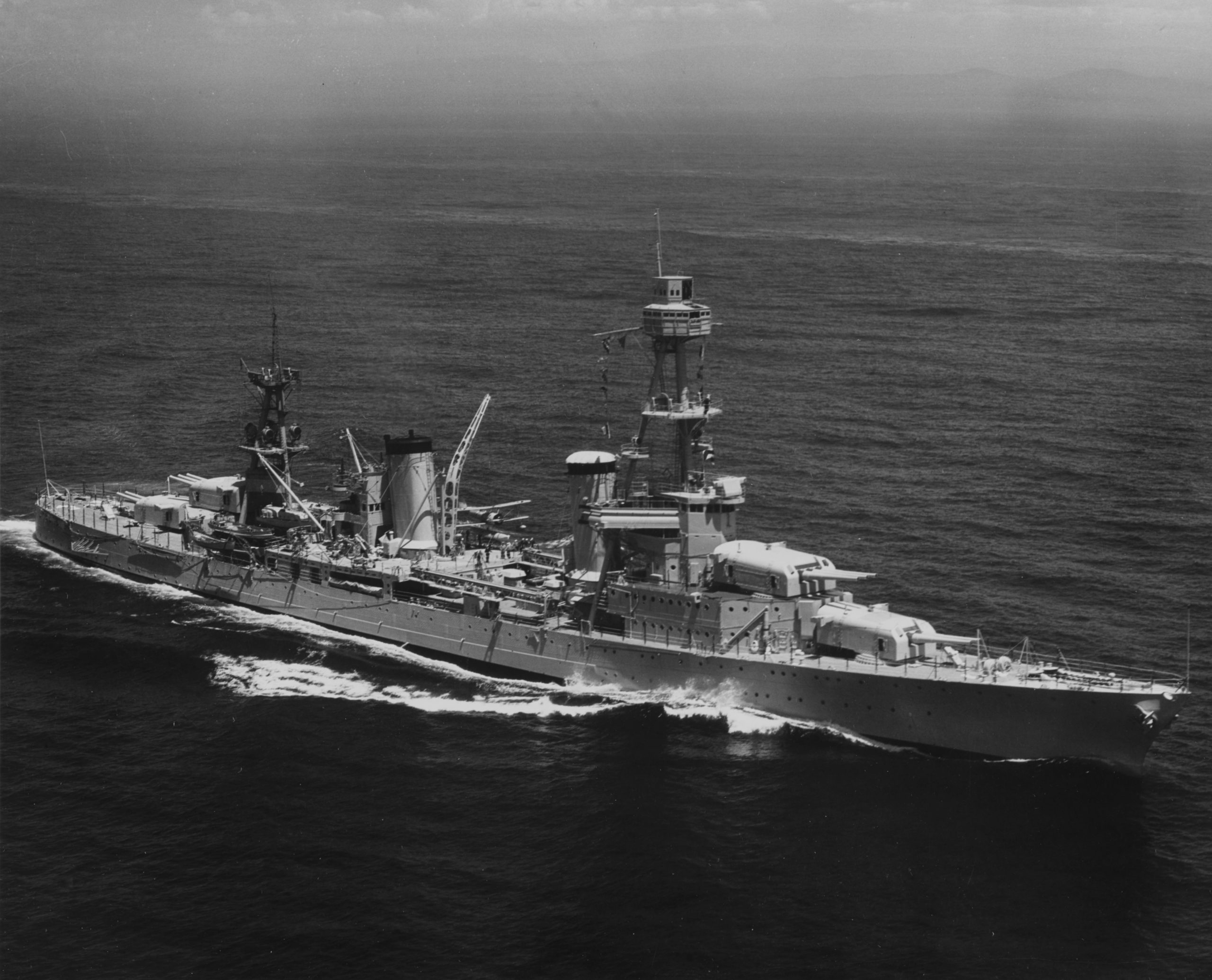
Today’s Navy faces a similar predicament. In an eerie parallel, the Navy has about the same number of surface combatants as it did in the mid-1920s when the Pensacolas were being built. It faces an even more complicated strategic environment and the curse of geography. Similar concerns over unrealistic force generation models, such as those that drove the 5-to-3 advantage, are echoed by Secretary of Defense Mark Esper’s recent comments to Congress. When asked why he rejected the Navy’s proposed shipbuilding plan, Secretary Esper said because in part “it kept the old deployment and readiness model, which is broken: It hasn’t worked for years, so why should we assume it will work in the future?”13 Current congressional budget challenges, especially with the coronavirus pandemic and the lagging Large Surface Combatant (LSC) timeline, are reminiscent of the challenges faced by the General Board and the ship design community in 1925.
The interwar Navy found a constrained solution through the iterative design and production of classes of ships. In fact, the recent award of 10 ships for the next generation frigate, FFG(X), could be considered the first iteration on a previous design.14 With longer construction times than in the 1920s, the Navy should consider iterating on the industry-proven frigate design to continue the production of successive flights when the first ten ships complete to keep the production lines hot.
Innovating Ship by Ship
From 1922 to 1941, the Navy commissioned 18 treaty cruisers. While that seems like a good production run when compared to today’s Arleigh Burke destroyers, those 18 ships were from five different ship classes. By 1926, the General Board had approved the design for the Pensacola class and the first ships began construction. The Pensacola cruisers featured four 8-inch gun turrets—two turrets with three guns, and two turrets with two guns—extensive, but thin armor belts, two seaplanes, and a host of smaller armaments. In terms of dimensions and handling, she was comparable to the Ticonderoga class cruisers in service today: nearly 600 feet long, almost 60 feet wide, and top heavy with mediocre seakeeping.15
At the time cruiser production took approximately three years per ship. The Navy would normally have waited for the Pensacola to deliver and be put through sea trials and a myriad of experiments before making revisions or designing a new class. But other major powers were laying down cruisers just as quickly, forcing “successive classes…to be designed and ordered before their predecessors had been completed (or even launched), so modifications had to be made on a theoretical basis without the benefit of trials and operational service.”16 Thankfully the Navy only ordered the Pensacola and the Salt Lake City. The class did not keep well at sea. Their dimensions and top-heavy design made them prone to large rolls and the low freeboard meant that water shipped over the sides easily.17
The Navy quickly modified the base design to eliminate the unusual turret configuration and correct the stability issues before the Pensacola even launched from the New York Navy Yard. The six-ship Northampton class delivered with three triple turrets and vastly improved seakeeping. The class also delivered 1,000 tons below the treaty threshold, an unexpected bonus, allowing the Navy to proactively add armor and other enhancements after commissioning. Taking advantage of the improved seakeeping that Northampton displayed, the Navy ordered the two Pensacola cruisers be retrofitted in the 1930s to match. Retrofitting the classes of treaty cruisers with designs from newer classes would be a hallmark of the Navy’s cruiser fleet through World War II.
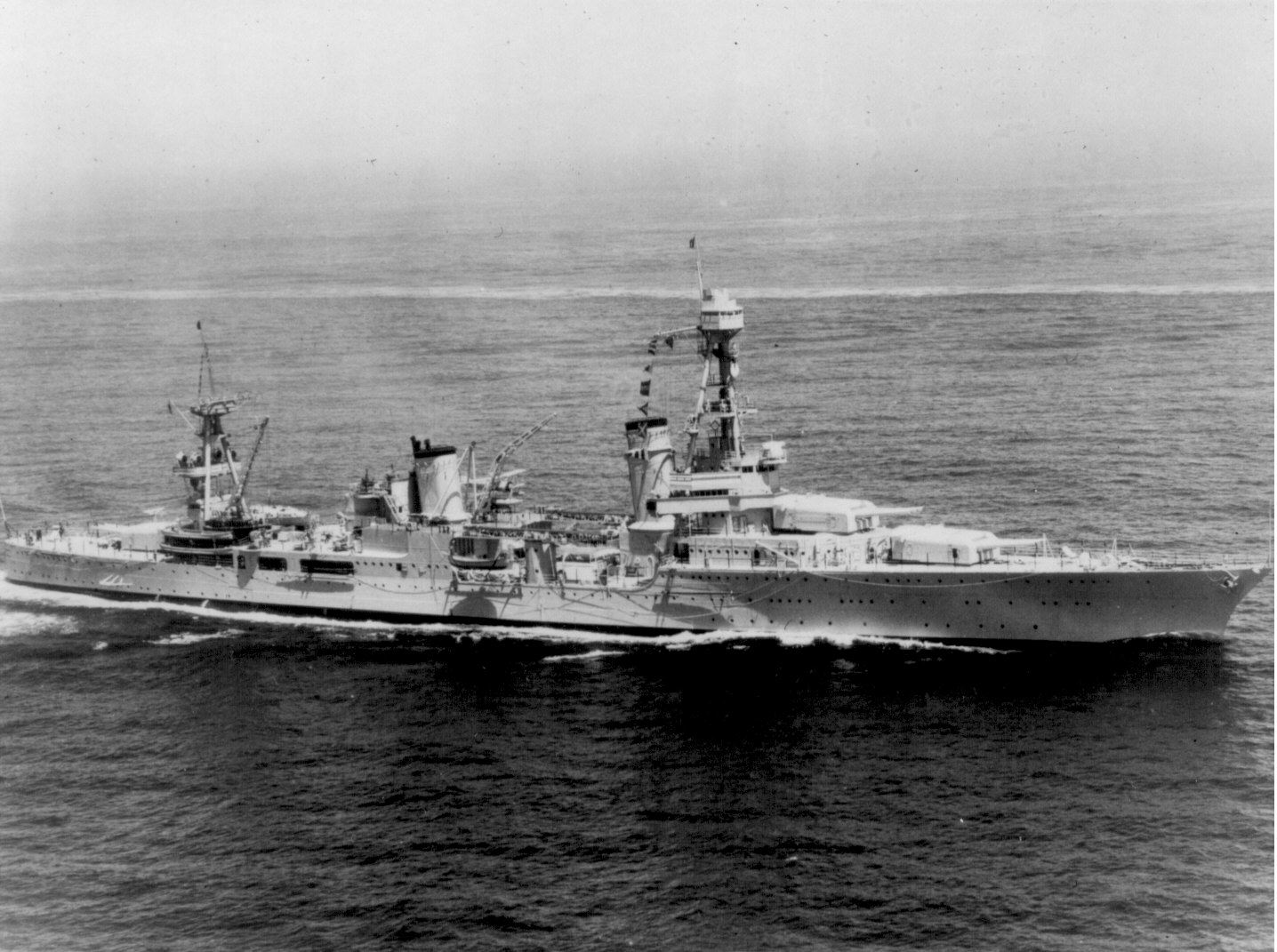
CNO Admiral John Richardson learned these lessons and incorporated them into the Design for Maintaining Maritime Superiority. Admiral Richardson thought that “the large combatant and others could be designed and fielded rapidly through an approach that focused on a good hull design and significant power margins now, and worried less about systems that would be upgraded throughout the life of the ship.”18 But today, the Large Surface Combatant program continues to slip further right as the Navy seems focused on getting mostly everything right in a single step. Admiral Eugene Black, recently the Director of the Surface Warfare Directorate OPNAV N96, stated that the Large Surface Combatant was pushed to the right as part of a broader, lower risk approach while waiting for other technologies, like directed energy and advanced combat systems, to mature.19
The Navy has the opportunity to evolve its surface combatants more rapidly, and it must do so. While the Flight III Arleigh Burke has some improvements over previous flights and will continue building to pace the threat from China, the Zumwalt-class destroyer represents the best opportunity for the Navy.20 Despite their success, the Burkes have reached maximum structural capacity for innovation—there is simply no margin left.21 But there is hope. Recent at-sea testing of the Zumwalt, with its tumblehome hull, shows excellent stability in high seas.22 The class has many advantages and drawbacks, similar to what the Navy experienced with the early Pensacola and Northampton cruisers. In many ways, the improved seakeeping characteristics, integrated electric propulsion system, and large surplus of design margin gives the Navy an excellent platform on which to innovate. Indeed, the drawbacks for the Zumwalt class, such as the procurement costs and the armaments, are excellent constraints to build a better ship. The Navy has done this exercise before in transforming the improvements from the Seawolf class submarine into the more affordable and more capable Virginia class.23
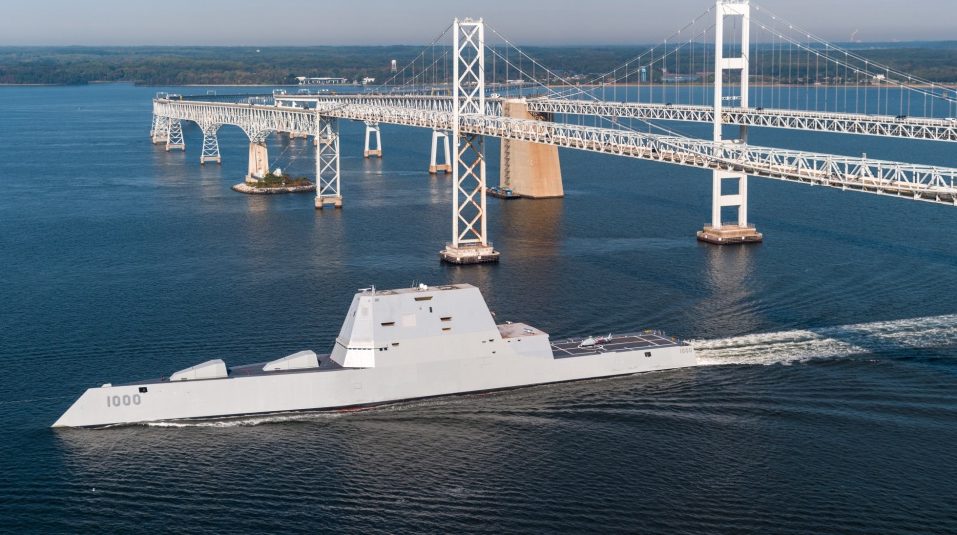
A Twist
As the General Board iterated on the Northampton class, seeking to improve seakeeping and armaments, the world situation took another turn. In April 1930, the five naval powers met in London and signed the London Naval Treaty. The treaty created two distinct classes of treaty cruisers, with no limitations on ships with armaments under 6.1 inches and more restrictive limitations on the heavier treaty cruisers with 8-inch guns.24 The Navy gained an 18 to 12 advantage in heavy cruisers over Japan.
The Portland class, originally planned for eight ships, had already started construction on the first two ships of the class when the London Naval Treaty was signed. The General Board allowed Portland and Indianapolis to complete and again suspended the rest of the class. The twist reflected the slow deterioration of the international environment and the attempt to prevent a future war by enforcing a further degree of parity among the competing powers. The Navy, with great foresight, took the opportunity to shift the remaining Portland hulls to the fresh New Orleans class design.
Rapid Innovation
The New Orleans class proved pivotal. The Pensacola and Northampton cruisers attracted widespread criticism for their lack of armor, but these designs reflected Captain Frank Schofield’s 1923 General Board decision that the cruisers “forsake nearly all attempt at passive defense of these vessels—armor—in order to have weight available for the full development of steaming radius and gun power.”25 Before the London Naval Treaty, the General Board envisioned the future New Orleans class to show only modest changes from the Northampton class, but the treaty changed all of that.
The General Board acted boldly, ordering seven ships with three different designs to try out experimental technologies and configurations. The New Orleans class featured a complete redesign of the propulsion spaces, to spread the boilers and engine rooms out to improve performance, and the introduction of “immune zones,” which hardened vital areas, such as magazines, to better protect them without armoring the entire ship.26 The reduction in weight from redistributing armor allowed the designers to improve protection in key areas. As a class, these ships featured a better layout and continued the use of dedicated command spaces for flagship activities, which the Board first inserted in the truncated Portland class.
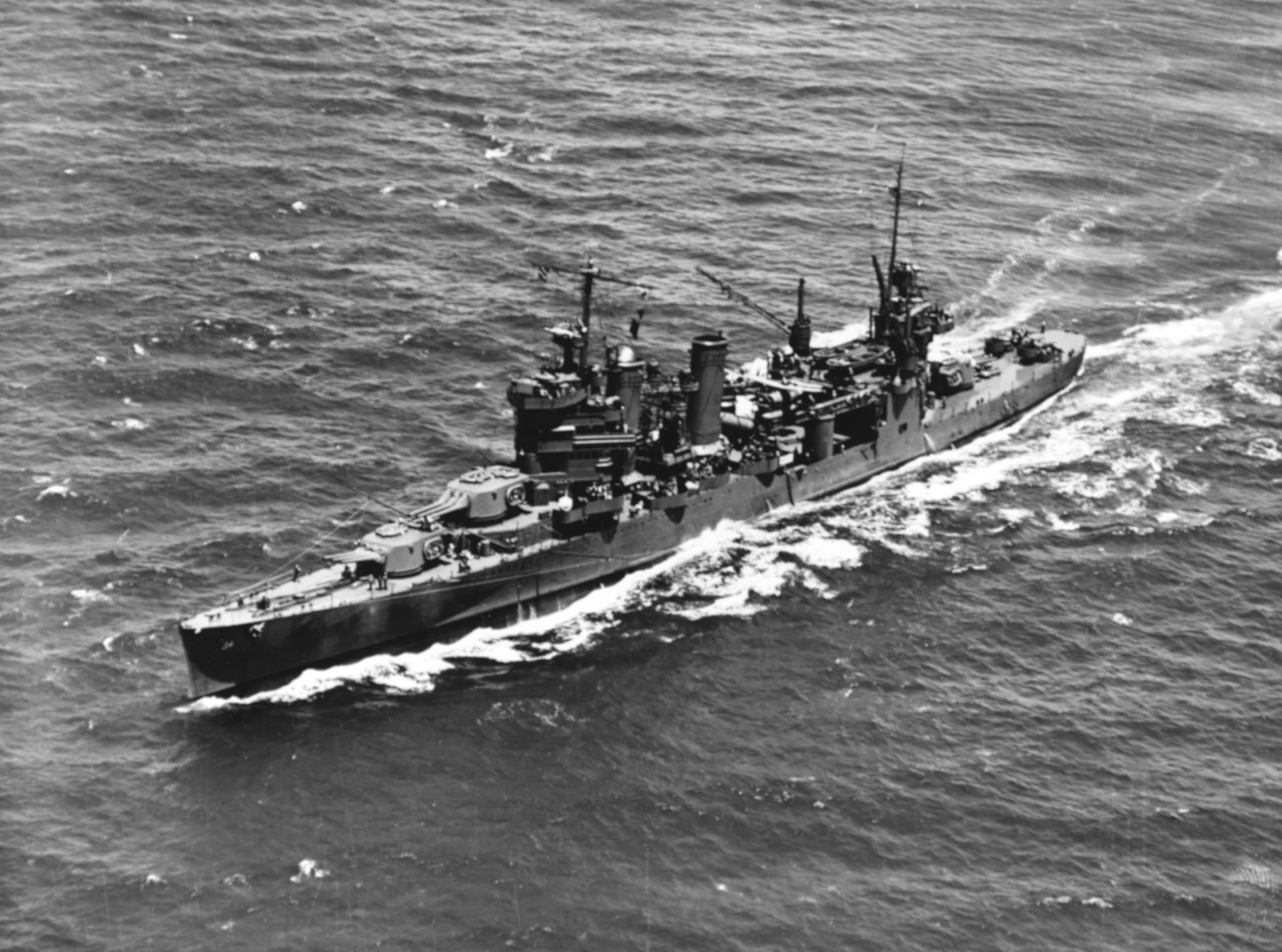
Overall, the highly successful New Orleans class laid the foundations for the light and heavy cruiser classes, the Cleveland and Baltimore classes, that the United States would produce in large numbers after the passage of the Naval Expansion Act of 1938 (more commonly known as the Two Ocean Navy Act) which authorized the U.S. Navy that won World War II. The mature design and features of the New Orleans, which were included with one eye toward looming conflict and the other on the lessons from the prior classes, allowed the Navy to rapidly upgrade these ships as new weapons and radar-directed fire control systems came online, with devastating combat effectiveness.27
Prompt and Sustained Combat at Sea
The evolutionary improvements in cruisers in the interwar period helped the Navy hold the line against the Japanese early in World War II. All classes of treaty cruisers, from the unstable, ‘tinclad’ Pensacola to the New Orleans classes, the last of the official treaty cruisers, fought in every major fleet engagement of the war, and their names are some of the most hallowed in naval history: Vincennes, Chicago, Houston, San Francisco.
Had the Navy waited, whether to perfect its requirements, for radar systems to mature, for the treaties to expire or to be renewed, it would have been deprived of ships that proved badly needed when war broke out. The General Board shows today’s Navy the path forward as it looks toward an era of renewed great power competition and constant congressional pressure to increase the battle force count. Several specific lessons include:
- Older ships cost more to sustain. Aggressively aim to retire them in favor of new ships.
- Embrace constraints to accelerate innovation while still delivering the needed ships.
- Long production runs produce stable build times and lower procurement costs, but iterating through smaller production runs across multiple classes allows the Navy to deploy newer capabilities sooner.
- Take modestly successful designs and continue to improve on them with each successive ship to the limits of naval architecture.
The Navy has already laid the groundwork to leverage our history with the new frigate class and the Zumwalt class. The Navy should not wait for new technologies to fully mature, but continue the evolutionary improvements to each successive flight of ships, inserting the technologies, like directed energy, when they are combat ready. As Vice Admiral Joseph Taussig remarked: “good men with poor ships are better than poor men with good ships.” We cannot predict when war might emerge, but should it start, we know that we will need more ships than we have today. Start building them now.
Lieutenant Commander Ryan Hilger is a Navy Engineering Duty Officer stationed in Washington D.C. He has served onboard USS Maine (SSBN 741), as Chief Engineer of USS Springfield (SSN 761), and ashore at the CNO Strategic Studies Group XXXIII and OPNAV N97. He holds a Masters Degree in Mechanical Engineering from the Naval Postgraduate School. His views are his own and do not represent the official views or policies of the Department of Defense or the Department of the Navy.
References
1. “Germany’s Navy Scares Britain.” New York Tribune. 17 March 1909. Page 1, Image 1, Column 3. https://chroniclingamerica.loc.gov/lccn/sn83030214/1909-03-17/ed-1/seq-1/
2. Mark Cancian and Adam Saxton. “The Spectacular & Public Collapse of Navy Force Planning.” Breaking Defense, 26 January 2020. https://breakingdefense.com/2020/01/the-spectacular-public-collapse-of-navy-force-planning/
3. “The Atlantic Fleet in 1915: Letter from the Secretary of the Navy.” United States Congress. 64th, 1st Session, Senate Document No. 251, 1916, pp. 14-15. https://babel.hathitrust.org/cgi/pt?id=mdp.39015025950596&view=1up&seq=7
4. Ibid, p. 15.
5. Ibid.
6. Ibid, p. 26.
7. “Limitation of Naval Armament (Five-Power Treaty or Washington Treaty).” 43 Stat. 1655. Papers Relating to the Foreign Relations of the United States: 1922, Vol. 1, Treaty Series 671, pp. 351-371, https://www.loc.gov/law/help/us-treaties/bevans/m-ust000002-0351.pdf
8. John Keuhn. “The Influence Of Naval Arms Limitation On U.S. Naval Innovation During The Interwar Period, 1921 – 1937.” Ph.D diss., Kansas State University, 2007, https://core.ac.uk/download/pdf/5164353.pdf.
9. Trent Hone. Learning War: The Evolution of Fighting Doctrine in the U.S. Navy, 1898–1945. Annapolis, MD: Naval Institute Press, 2018, pp. 124-125.
10. Edward Miller. War Plan Orange: The U.S. Strategy to Defeat Japan, 1897-1945. Annapolis, MD: Naval Institute Press, 1991, p. 144.
11. John Jordan. Warships after Washington: The Development of the Five Major Fleets, 1922-1930. Annapolis, MD: Naval Institute Press, 2011, p. 110.
12. Oguz A. Acar, Murat Tarakci, and Daan van Knippenberg. “Why Constraints are Good for Innovation.” Harvard Business Review, 22 November 2019, https://hbr.org/2019/11/why-constraints-are-good-for-innovation
13. Paul Mcleary. “SecDef Esper Seeks Detente With HASC; New Navy Plan This Summer.” Breaking Defense, February 28, 2020. https://breakingdefense.com/2020/02/exclusive-secdef-esper-seeks-detente-with-hasc-new-navy-plan-this-summer/
14. Megan Eckstein. “Fincantieri Wins $795M Contract for Navy Frigate Program.” United States Naval Institute News, 30 April 2020. https://news.usni.org/2020/04/30/fincantieri-wins-795m-contract-for-navy-frigate-program
15. James Stavridis. “Handling a Ticonderoga.” Professional Notes. United States Naval Institute Proceedings. January 1987. https://www.usni.org/magazines/proceedings/1987/january/professional-notes
16.Jordan, p. 113.
17. Ibid, p. 122.
18. Megan Eckstein. “Future Large Surface Combatant Pushed to Late 2020s, Navy Takes ‘Measured’ Development Approach.” United States Naval Institute News, 14 January 2020. https://news.usni.org/2020/01/14/future-large-surface-combatant-pushed-to-late-2020s-navy-takes-measured-development-approach
19. Ibid.
20. Megan Eckstein. “Navy’s Next Major Ship Program Sees Challenges Balancing Requirements and Cost.” United States Naval Institute News, 17 March 2020. https://news.usni.org/2020/03/17/navys-next-major-ship-program-sees-challenges-balancing-requirements-and-cost
21. Joseph Trevithick. “The Navy May Use One Hull Design To Replace Its Cruisers And Some Destroyers.” The Drive. July 13, 2018. https://www.thedrive.com/the-war-zone/22138/the-navy-may-use-one-hull-design-to-replace-its-cruisers-and-some-destroyers
22. David Larter. “Here’s how the destroyer Zumwalt’s stealthy design handles stormy seas.” Defense News, 23 January 2020. https://www.defensenews.com/naval/2020/01/23/heres-how-the-ddg-1000s-stealthy-hull-design-handles-stormy-seas/
23. John Schank, Cesse Ip, Frank LaCroix, Robert Murphy, et. al. Learning from Experience: Lessons from the U.S. Navy’s Ohio, Seawolf, and Virginia Submarine Programs. RAND National Defense Research Institute. 2011. https://www.rand.org/content/dam/rand/pubs/monographs/2011/RAND_MG1128.2.pdf
24. “Limitation and Reduction of Naval Armament (London NavalTreaty).” 46 Stat. 2858. Papers Relating to the Foreign Relations of the United States: 1930, Vol. 3, Treaty Series 870, pp. 1055-1075, https://www.loc.gov/law/help/us-treaties/bevans/m-ust000002-1055.pdf
25. Hone, pp. 144-145.
26. Jordan, p. 149.
27. Hone, p. 145.
Featured Image: The U.S. Navy heavy cruiser USS New Orleans (CA-32) steams through a tight turn in Elliot Bay, Washington (USA), on 30 July 1943, following battle damage repairs and overhaul at the Puget Sound Naval Shipyard. (Photo via Naval History and Heritage Command)


Excellent article! Although so much has changed so dramatically since the inter-war period 1919-1940, there are still some very fundamental lessons from that period regarding fleet architecture evolution and ship design principles that are very applicable today. BZ to LCDR Hilger for shining a bright light to help illuminate the way ahead.
Excellent article! Although so much has changed so dramatically from the inter-war period 1919-1940, there are lessons from that time regarding principles of ship design and the development of a strategically sound fleet architecture that remain very applicable today.
BZ to LCDR Hilger for shining a very bright light to illuminate some of those critical lessons for us.
The US Treaty cruisers had minor innovations across their build process but all sub-classes faired poorly in combat against their Japanese opponents. US cruisers in general could be disabled by single heavyweight Japanese torpedo hits and sunk outright by more than one. The current DDG-51’s have been the subject of innovation throughout their lives through different AEGIS baselines and now through open architecture upgrades; concepts not possible 80-90 years ago. The cruiser also changed fundamentally after World War 2 with the addition of more too heavy sensors and missile main batteries to the point that today’s CG and DDG classes really no longer fit in the familiar world war 2 ship lineup.
LCDR Hilger has provided some interesting history, but when it came to combat operations the Pensacola’s and New Orleans variants faired equally bad in comparison with their Japanese counterparts that ignored treaty limits.
Rock solid understanding of the issue here. Don’t fight over FFGX config now, just bid another 10 ships with changes it might need down the road. My only worry is whether those VLS cells will be tactical rather than strike length. Its sill to run the ships as hard as they do then plan 40-45 year service lives. Assume 35 years is a great run. 40 years max. The Coast Guard has some 50+ year ships but they really shouldn’t. I’d like carrier bulk buys of 3 every 8 years and just have 1 aviation ship class. It would need to be simpler and possibly smaller than Ford so modules could be built in other yards like Philly. Then each iteration keeps a stable design. Don’t push changes early. Design for retrofit. I also hope for a Zumwalt comeback. Plenty of tech wasn’t mature when they had to make the build decision. Get those additional items into the ship and resolve the armament issues.
In combat the ships of the first class, Pensacola and Salt Lake City, proved to be as effective as the later ships. Both survived the war having seen a great deal of combat.
So to build on this idea of iterating improvements into even moderately successful designs; Perhaps we should build another tranche of an LCS class with significantly improved engineering layouts, focused on maintainability and reliability?
I would say to not give up on small ships just due to the LCS, but the engineering changes are such a tall order a clean sheet might be better. Especially in the case of Freedom.
Great analysis, the most beneficial reminder is that half of all weapon systems designed are in service when a conflict arises. Far better to have half and struggle to survive than none and utterly fall.
The key problem I see as an inventor, is that the Navy is not wise to respect new advanced innovations, not yet already known, by the many directors/commanders who are supposed to respond to new proposals and not ignore new potential advantages from private companies that employ a modern wiser business development strategy.
Yes The Navy gets many offers and has thousands of inventions not in use, and a long political and professional procedures it must follow for justified reasons, but without starting with a safe open door process/policy, the loss is to the nation and the maritime industry.
I am not a professional ship designer but am a follower of the US Navy as well as a Navy brat that walked the decks of the brand new CVAN-65 Enterprise as well as two Iowa class battleships. I also spent many years contemplating naval warfare with the Warsaw Pact a la The Hunt for Red October . I recently read the well-thought out article by Ryan Hilger on the CIMSEC website called “More Hulls Now: What Treaty Cruisers Can Show the Navy About Innovating Ship Design.”
Ryan’s article provoked me enough to join CIMSEC today and to offer my somewhat uneducated thoughts to the community. I am really concerned about the rise of China and how we have let the US Navy run down its inventory of warships.
Studying the profile and the top-looking-down view of the Arleigh Burke destroyer’s layout, I have considered several somewhat simplistic ways to add more ship launched missiles to the US Navy by creating ‘treaty cruiser‘ style variants of the DDG-51 destroyer (to borrow Ryan Hilger’s apt term for getting new ship hulls in the water and out to the fleet):
Version 1
1. Start by using the Arleigh Burke destroyer hull.
2. Stretch the hull design in front of the ship to install an additional 32 cell VLS increasing the number of VLS tubes to 126.
Version 2
1. Start by using the Arleigh Burke destroyer hull.
1. Stretch the hull design behind the aftmost cell of 32 missile VLS cells to add another 32 missile VLS cell for a ship total of 126 VLS tubes.
Versions 1 and 2 above are basically CLG versions much like the Ticonderogas, borrowing a destroyer hull, only lengthening it to increase the missile load.
Version 3, however, moves a little closer to full blown cruiser by stretching the DDG-51 ship hull to add 32 missile VLS cells to both the front and rear of the ship as described in versions 1 and 2 above.
Depending upon the seaworthiness of these stretched DDG-51 hulls – it might be possible to stretch the rear of the ship to add 64 more VLS tubes, not just 32 as in Version 2 above.
Would such designs be worth trying?
Barring any glaring mechanical, electrical, or seaworthy problems, I would say absolutely.
Say just for the sake of argument, that these modified DDG-51’s take the same amount of time to build as regular DDG-51’s. If the US Navy opted for two 126 missile CLG versions and two 160 missile CG versions per year, in 10 years, at two hulls of each design per year we would have added the following quantities of ship launched missiles:
32 missiles/ship x 2 ships/year x 10 years = 640 missiles
+
64 missiles/ship x 2 ships/year x 10 years = 1280 missiles
For a total of 1980 ship launched missiles.
These light cruisers might not be around for 30-40 years but might help close the gap with China until we roll out some well-designed large surface combatants.
Pete Werner, MBA, BSET
Owner, Werner Glass Consulting,
Industrial Glassblowing Process Analyst